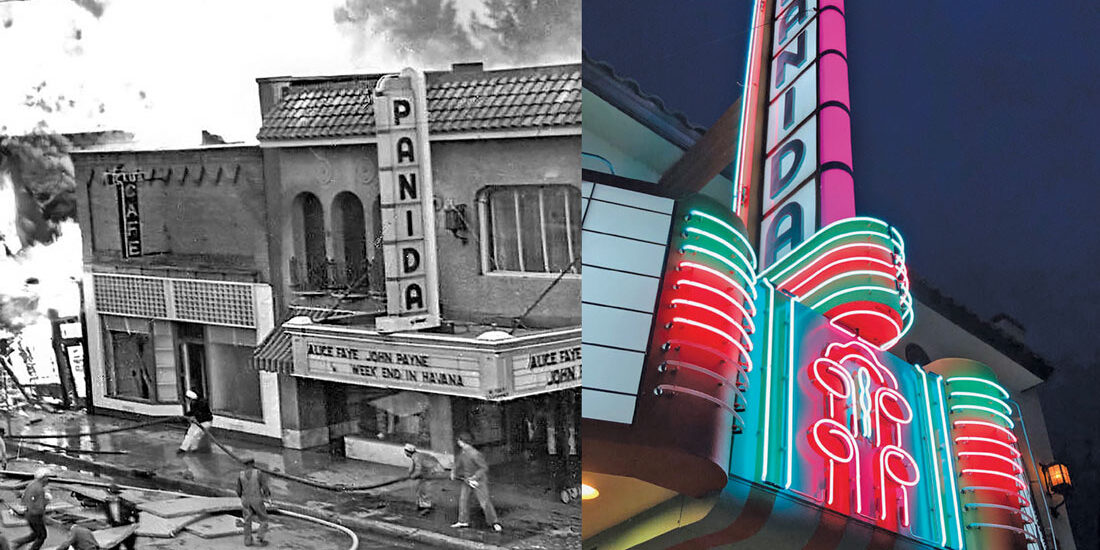YESCO Says “Yes”
To Relighting Idaho’s Panida Theater

During the winter of 1969, in the 7th grade, I began working at the Panida (PANhandle of IDAho, pronounced PAN-e-DAH) Theater in Sandpoint, Idaho. I’m still an employee, though I haven’t always worked at the theater, which was built in 1927.
The official duties for my 35-cent-an-hour job included walking around town putting movie posters in exterior wall display frames. It was a job no one else wanted, as that year, Sandpoint had the most snowfall in 55 years. Later, I joined the theater’s cleaning crew, who were allowed a box of popcorn and fountain drink. The newly introduced Mountain Dew was my favorite, and needless to say, I will not touch the stuff to this day!
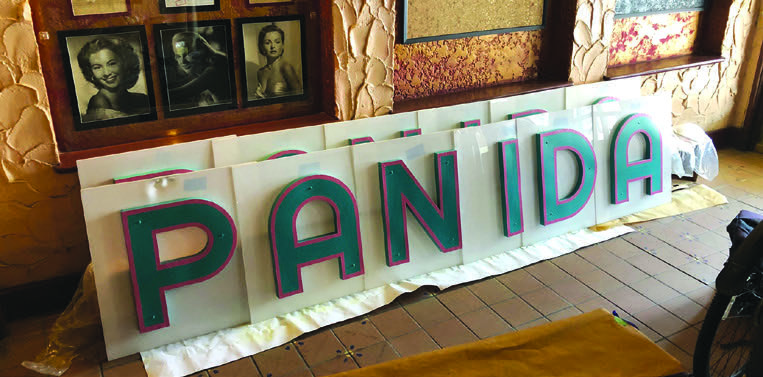
My first love was movies, and the theater became the place I made memories. I had my first kiss from a co-worker under the lighted marquee and had my first beers with older employees.
Later, I learned to be a projectionist, the ultimate position at the theater. Paul Ardnt and Frank Delamarter, older college students, and the old-timer pro of the theater, Bob Dubal, taught me. We were running duo 35 mm projectors from the 1940s with carbon-arc lamps. It would get so hot in the summers up in the projection booth as there was no ventilation or air conditioning. It was miserable work, but that was where the magic happened!
The 35mm film reel lengths were 500 feet and lasted around 11 minutes. An average 90-minute film required up to 15 reels, with the projectionist performing precise switching between reels on the two synchronized projectors prompted by visual cues built into the film near the end of each reel.
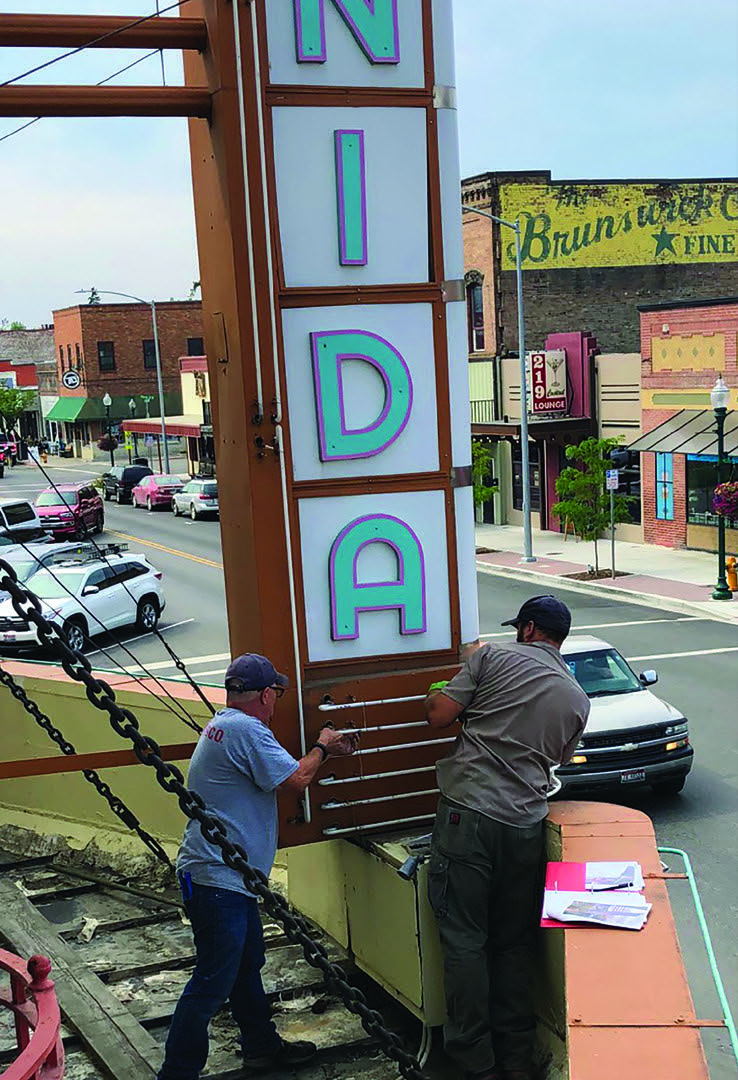
The films arrived in heavy metal canisters that contained three reels. The projectionist’s first job was assembling the trailers, shorts, and cartoons into an initial reel that ran before the main feature. We also set up the reels at the editing table and then broke them down at the end of the run to put into the large metal carrying cases. The next theater in line for that feature, which was the Rex in Bonners Ferry, Idaho, picked up the cases.
During my first years, the theater was owned by Floyd Gray, a California transplant from the early 1950s who bought it from the son of the original owner/developer, F.C. Weskil from Colfax, Washington. Gray replaced the original three-sided square marquee with a deco-design structure that still is used.
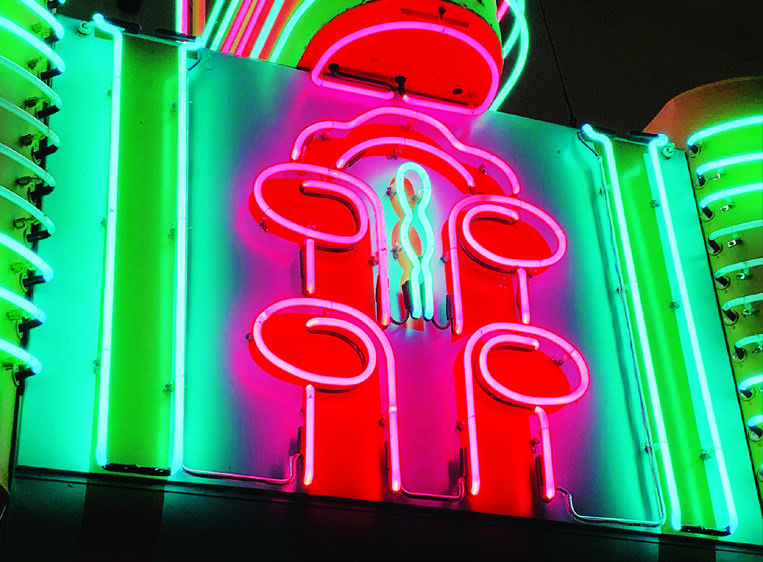
He was also a showman and, for a spell starting in the late 1950s, performed as “Farmer Gray” on stage on weekends for double-bill matinees with his bevy of “Farmerettes,” assistants who were local high-school girls. Gray ran a bingo game for the audience, who were primarily kids in town to spend their “egg” money earned on the farm. The production sets were still stored backstage when I worked as a youth. They included Farmer Gray’s Emporium, a full-sized country store facade with covered front porch and pickle barrels, and an interior manor home setting with wainscot, wallpaper, and French doors. The movie screen was then lowered to show the matinees.
After Gray died in 1972, his family continued operating the theater until it closed in 1979. The theater then hosted live theater and served as a concert venue under different owners but was shuttered and in disrepair in the early 1980s. Three local women, Susan Bates-Harbuck, Jane Evans, and Laurel Wagers, who were dubbed the Panida “Moms,” then came together to ultimately save the theater from potential demolition by the last owners, a holdings company based in Calgary.
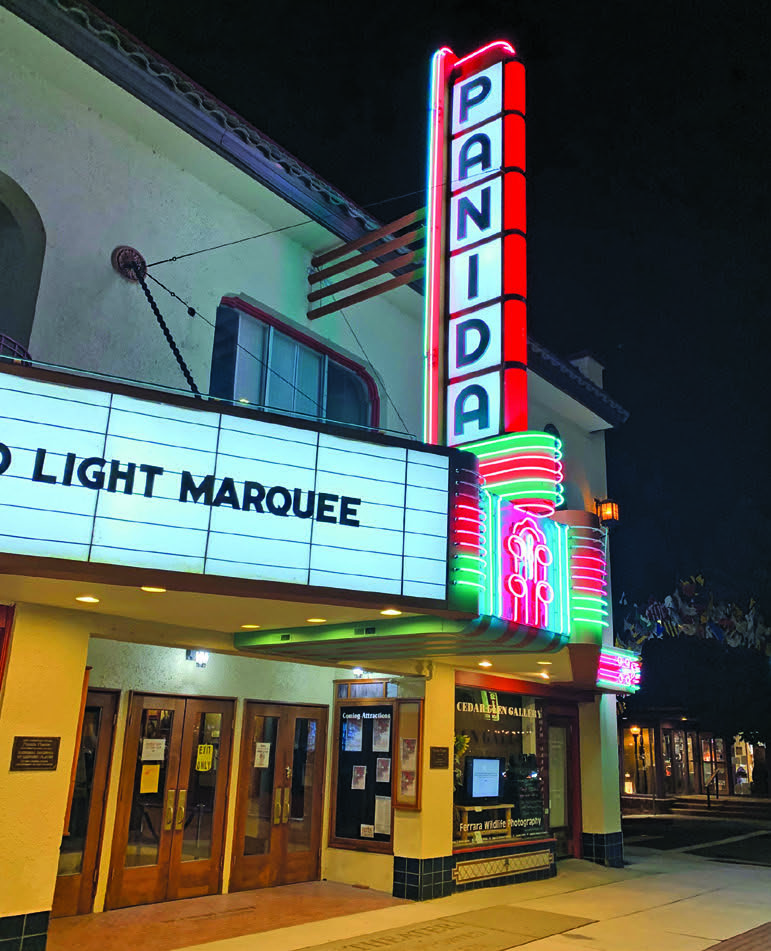
Since the 1980s, a Board of Directors has overseen the theater’s operation. Unfortunately, the previous Board allowed its neon marquee to go dark over the past six years. Inspired by my long association with the Panida as an employee and volunteer, I initiated an effort to save the marquee. My endeavor was aided by Randy Dixon of the Idaho Heritage Trust, who had restored neon signage in Pocatello.
I contacted the YESCO Electric Sign Company located in Post Falls, Idaho, one of the region’s last remaining neon fabricators. They provided an estimate, as did a second sign company. The Board selected YESCO after the fundraising chairperson, Foster Cline, cultivated numerous donations and grants for the funding. My job was coordinating the work and obtaining permits and an estimate for the restoration of the marquee.
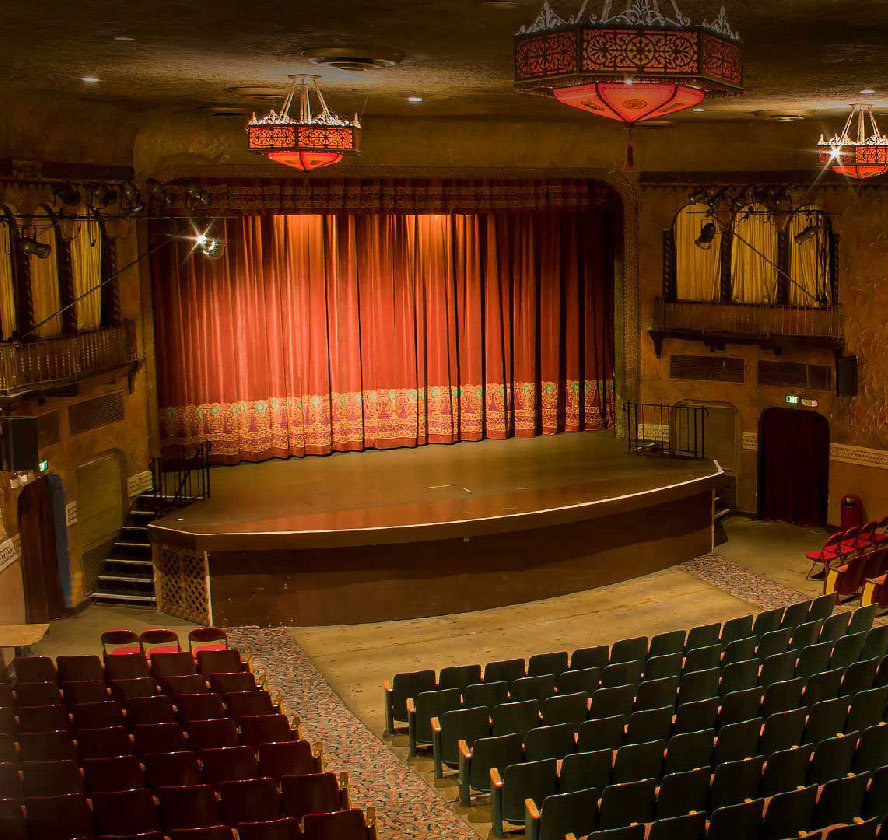
Work began in August 2021, as YESCO crews removed all internal and external neon and replaced the interior lighting behind all white plexiglass panels with cost-efficient LED elements. Throughout the summer, I set up ladders and coordinated a boom truck to clean, repair, prime, and repaint the entire structure and resurfaced its roofing along with Panida’s facility manager, Bill Lewis. I also rehabbed and hand-lettered the original mounted PANIDA dimensional letters on the marquee’s mast. Later that month, YESCO completed the neon tubing installation on time and close to budget.
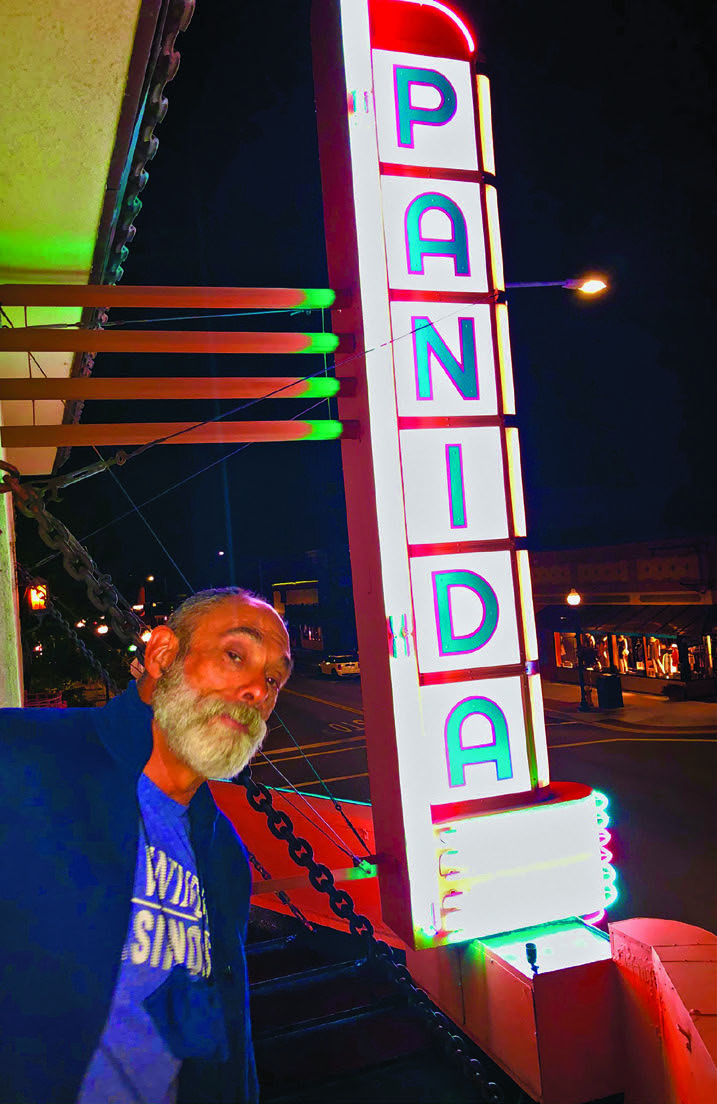
Doug Jones at the Panida Theater marquee relighting ceremony.
We held the marquee’s official relighting ceremony on November 9, 2021, in conjunction with our 501c3 annual membership meeting. Hardy members, bundled against the season’s chill, cheered the coming-to-life of the theater’s iconic beacon.
After a dark period of more than 18 months involving COVID-19, the loss of many Board members, the removal of the artistic director, resignation of staff, and retirement of our longtime facilities manager, the theater has begun a cautious reboot. The Panida Theater comes out of the darkness again, looking forward to a brighter future and its continuing promise of quality performance in north Idaho.
Did you enjoy this article? Join the SCA and get full access to all the content on this site. This article originally appeared in the SCA Road Notes, Spring 2022, Vol. 30, No. 1. The SCA Journal is a semi-annual publication and a member benefit of the Society for Commercial Archeology.
More Articles Join the SCA


